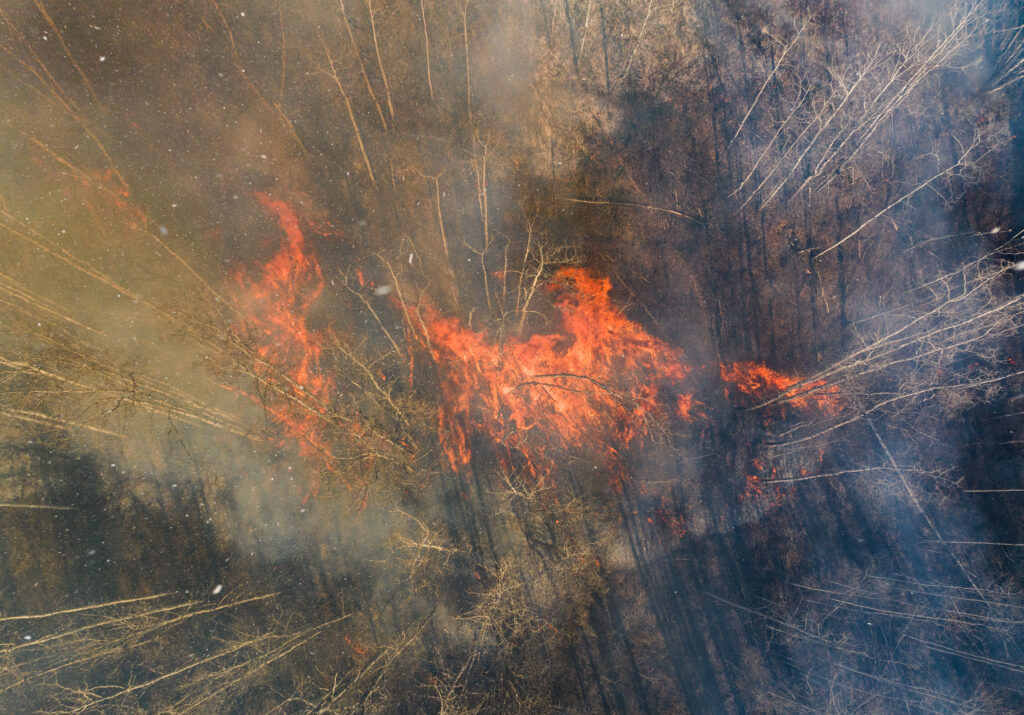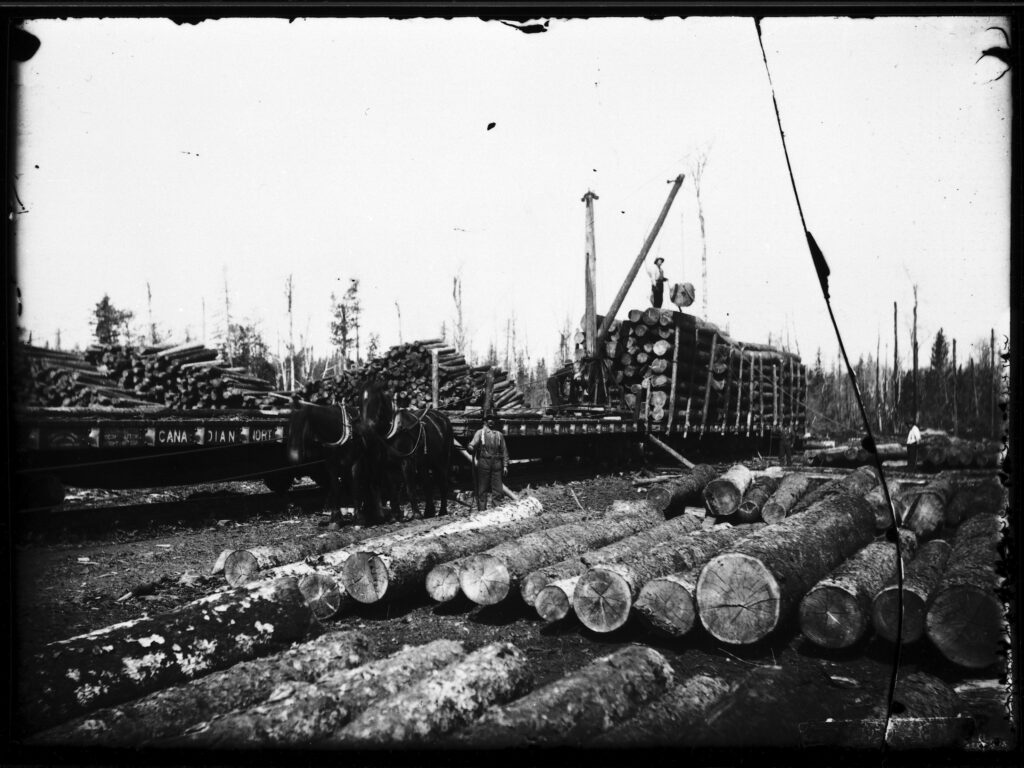British Columbia’s forests are burning up. Year after year, B.C. wildfires of increasing size and intensity displace thousands and reshape the province’s landscapes. Smoky skies have become the summer norm. Fire season is now inescapably part of living here.
Here’s what you need to know about wildfires currently burning in the province and what to do if fire approaches your doorstep. This page — including our interactive map — will be regularly updated throughout the 2024 fire season.
B.C. wildfire map and latest info
This map on our website is continually updated with live information from the BC Wildfire Service. Click on the icons to learn more about specific fires and to see our reporting. For more detailed information and to access additional resources, please visit https://wildfiresituation.nrs.gov.bc.ca/dashboard.
- As of July 31, there are 336 active wildfires, including two new fires over the past 24 hours. Over the past seven days, 251 fires were extinguished, including 36 in the past 24 hours.
- There are six wildfires of note: the Argenta Creek wildfire in the Kootenay region which has prompted evacuation orders, the Dogtooth FSR wildfire south of Golden, which has shut down Highway 95 and resulted in a number of evacuation orders; the 24,932-hectare Shetland Creek complex, a lightning-ignited fire burning near the community of Spences Bridge, between Lytton and Ashcroft; the 14,293-hectare Antler Creek wildfire, part of the Groundhog complex near Wells and Barkerville; and two wildfires (Aylwin Creek and Komonko Creek) burning on either side of Highway 6, near New Denver and the village of Silverton.
- An evacuation order is in place for the Aylwin Creek fire, and an evacuation alert is in place for the Wilson Creek fire near New Denver.
- As of July 31, the Sooke fire (Old Man Lake fire), west of Victoria, is being held. The fire is in the Capital Regional District’s Greenbelt and is burning only a few kilometres from Greater Victoria’s water supply area. Authorities have closed the popular Sooke Potholes Regional Park and other parks and trails in the area.
- Numerous other evacuation orders and alerts have been issued as fire activity on the landscape continues across the province.
- Recent rainfall and cooler weather has reduced fire activity in some regions and major incidents. As of Aug. 1, campfires will be permitted again in the Prince George and Northwest fire districts.
Useful terminology used by BC Wildfire Service
For more terms commonly used by wildland firefighters, see here.
- Out of control: A wildfire that is continuing to increase in size or anticipated to spread beyond the current perimeter or control line. Out of control does not mean the wildfire is dangerous or a threat. It refers to conditions, including weather forecasts and fire behaviour, that are expected to keep the fire growing.
- Being held: A wildfire firefighters are able to keep within a predetermined perimeter and not expected to immediately spread further, based on fuel, weather conditions and available resources.
- Under control: A wildfire suppressed to the point it will not spread beyond the current perimeter.
- Out: A wildfire no longer burning.
- Holdover: A wildfire that continued burning throughout the winter, smouldering underground. While the extent of holdover fires is defined by their last perimeter, how much of the fire is still burning is unknown. When warm, dry conditions occur in spring, a holdover fire can reignite.
- Evacuation alert: A notification a wildfire is burning close to your home or community and you should be ready to leave on short notice.
- Evacuation order: A notification you are at risk and you should leave immediately.
- Fuel: Any organic matter that can ignite and burn, such as leaves, sticks, grass and trees.
- Initial attack: Similar to “first responders”, this refers either to the first firefighting personnel to arrive at a wildfire or the action taken to halt the spread or potential spread of a fire.
- Controlled burns: Prescribed or controlled burns are a tool to mitigate the effects of fire both during wildfire response and before fires start. Reducing the available fuel by safely burning it when conditions allow can protect communities and support wildland firefighters during a response situation. Cultural burning is also a form of controlled burn.
Emergency resources
To ensure you have access to the most up-to-date information, follow @BCGovFireInfo on X and connect with your local municipality or regional district on Facebook. If you don’t use social media, bookmark the government’s wildfire dashboard on your phone or internet browser.
Download the BC Wildfire Service app on Apple or GooglePlay for information about fires, suppression efforts and evacuation alerts or orders. Make a plan using B.C.’s emergency ready service and prepare a grab-and-go bag. If you see a wildfire, please call 1-800-663-5555 or *5555 on a cell phone to report.
Evacuation alerts and orders are issued by municipalities and regional districts and are linked via the BC Wildfire Service portal. Follow @EmergencyInfoBC on X for more information or bookmark https://www.emergencyinfobc.gov.bc.ca/ to stay connected with emergency officials. Some municipalities or regional districts have set up emergency text, phone or email alerts you can subscribe to — contact your local authority to sign up.
If you are under an evacuation alert, get ready to go — you might not have much time and fire doesn’t keep business hours so an evacuation order could come in the middle of the night.
How do wildfires start?
In B.C., the majority of wildfires each year are caused by lightning, according to the provincial government. Human activities including carelessness, such as flicking a cigarette butt out the car window or not fully putting out a campfire, make up the remainder. However, when BC Wildfire Service notes the cause of a fire is human, this does not necessarily mean a specific person is responsible. Put simply, it applies to any fire not started by lightning. For example, a wildfire lit by a tree falling on a hydro line would be categorized as human-caused, as would a fire started by industrial activity.
Whether a wildfire has a natural or human cause, underlying conditions determine how the fire behaves — and how big it can get. Drought conditions, decades of fire suppression and forest management practices (including mono-crop tree plantations) are all factors. And a hotter, drier climate is exacerbating those conditions. The planet is heating up, due to carbon pollution created from burning fossil fuels, and the wildfire season is becoming longer and more intense.
Solutions, in-depth analysis and more
As fire season becomes entrenched in B.C.’s collective psyche, researchers, Indigenous leaders and governments at all levels are seeking solutions. From cows clearing fire-prone undergrowth to scientists studying how small wildfires benefit birds while mega-fires devastate habitat, The Narwhal is looking at what is being done to prepare for — and survive — the new wildfire reality.
Our 2024 series, In The Line of Fire, explores stories about the people on the frontlines of the crisis, including how cultural burning is healing the land and people while mitigating the effects of wildfire and other solutions, plus an unflinching look at those most affected by wildfires. That includes wildland firefighters who are being tested like never before.
We are also looking at lessons learned from past fire seasons and asking tough questions about how governments are responding to the growing crisis.
— With contributions from Sarah Cox and Karan Saxena


